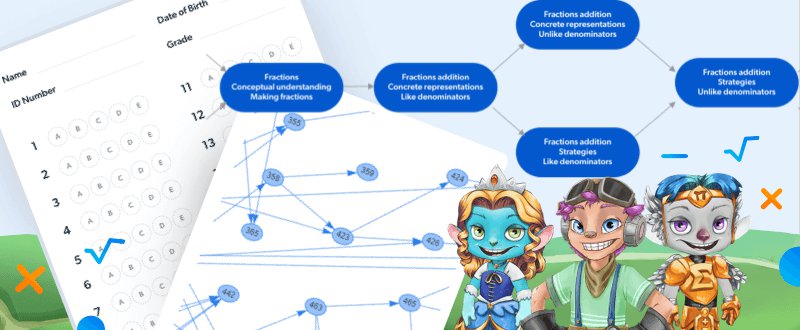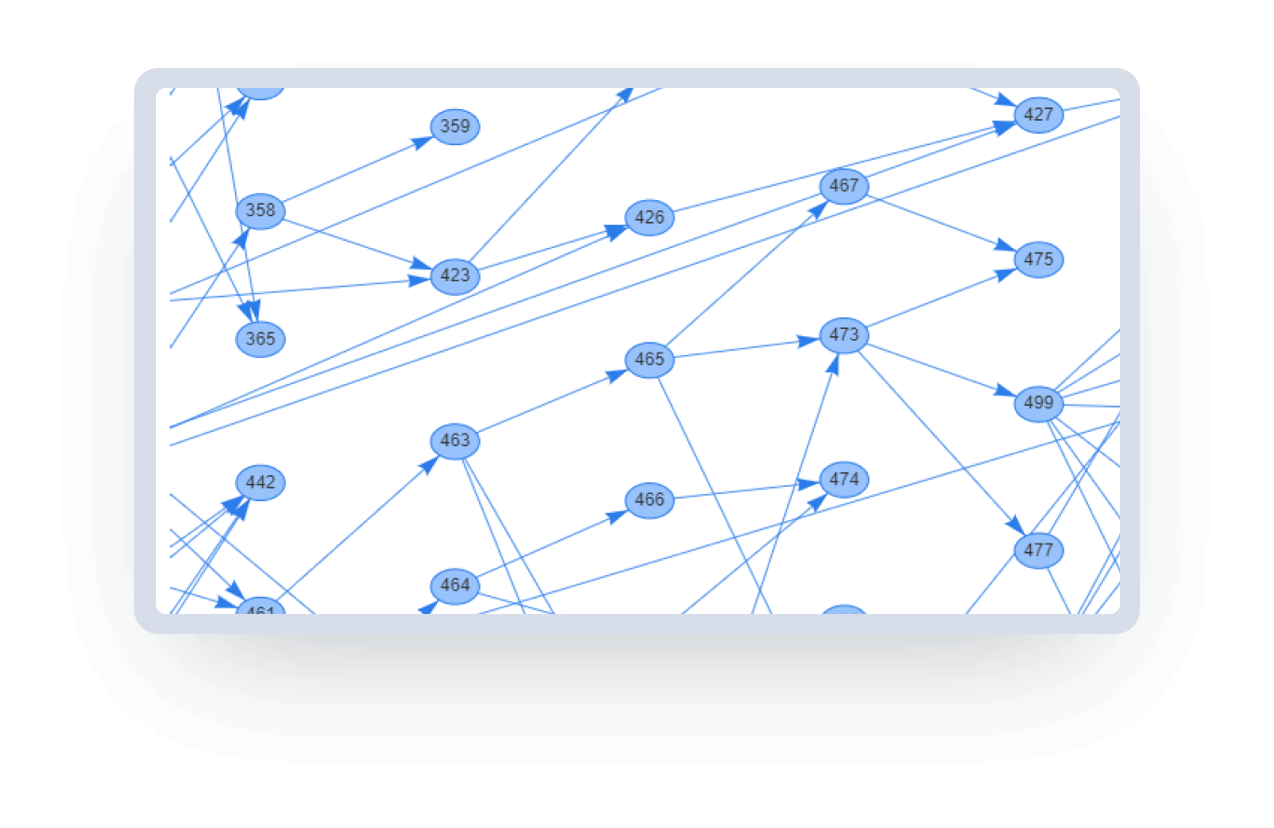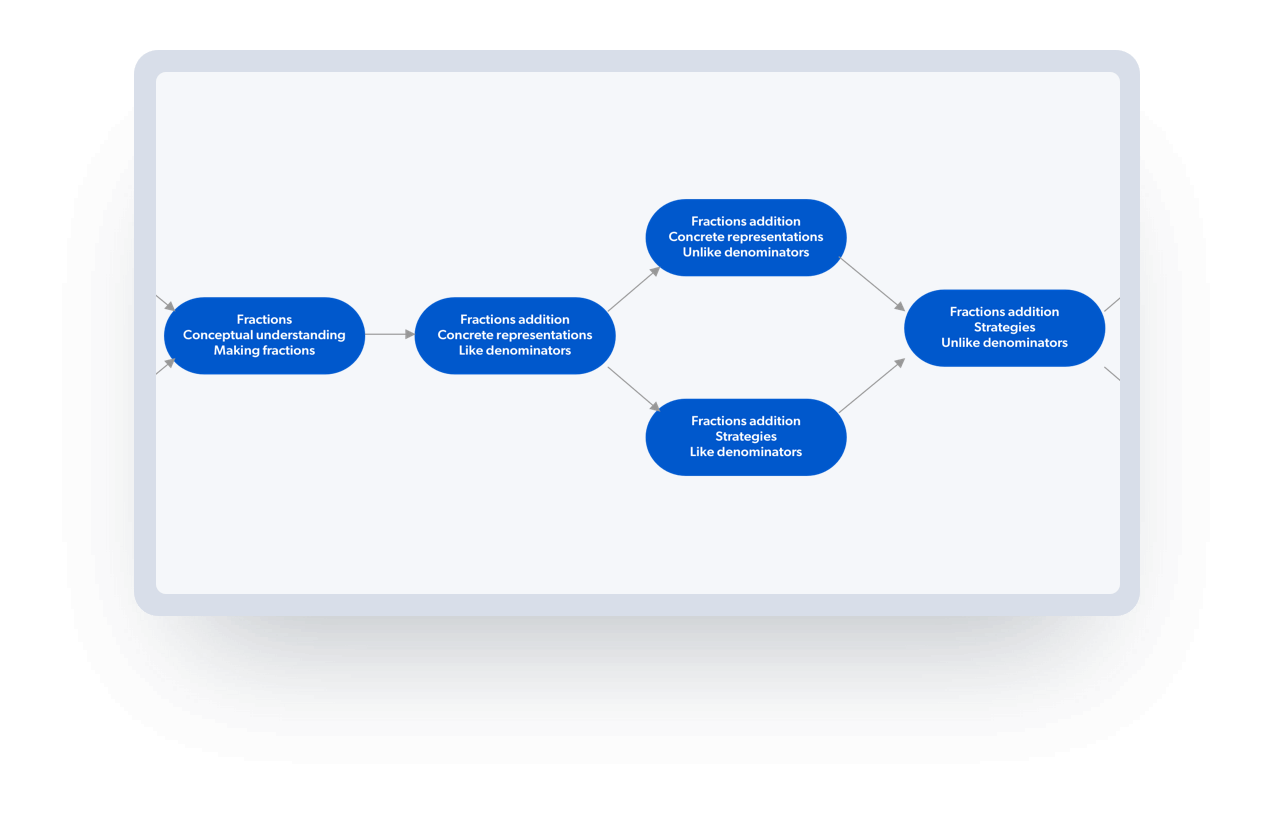
How Matific Uses Adaptive Technology to Help Students and Teachers Succeed
Here at Matific, we judge the merits of our work based on its adherence to our pedagogical principles, one of which is personalized learning. When tasked with creating an adaptive engine, we were concerned first and foremost with providing a tool for personalised learning:
Each child learns in unique ways, from different learning speeds to different learning styles. By providing the right question at the right time we can help every child follow their own learning pathway to success.
The new student experience represents an enormous leap forward for Matific in so many ways, but the one I'm going to talk about today is our adaptive engine. This technology connects our episodes together and creates a personalized learning pathway for every student through our entire catalogue. It represents a realisation of our pedagogical principles for every student in a profound way.
The adaptive landscape
The simplest form of education technology (especially in mathematics) involves automatic test marking. This technology is quite well-established, arising in the 70s and 80s to become a staple of standardised testing across the globe.

Almost every edtech product incorporates "automatic marking" in some way - some solutions allow you to analyze the data in clever ways, or provide the tests in real-time for exciting classroom competitions. Other products recommend interventions based on analysis it conducts.
Adaptive technology takes this a step further. An adaptive program analyzes the data and takes action immediately - most often, to optimise the user experience. This holds particular appeal for teachers, who want to "personalize" their instruction for every student, but do not have the time to give the task the attention it requires. Edtech solutions that deliver on adaptive technology are growing because of the time that it saves teachers - and the results they produce in students.
Matific's adaptive algorithm
The principal goal of the engine is to quickly identify a student's zone of proximal development (ZPD) and provide them with activities within that zone. As they learn and grow, we update the ZPD in response - in short, we learn and grow as they do.
Matific has over 1000 skills in its database. Examples include:
- Area / Measurement / Measurement by tiling
- Measure the area of a shape, exactly or approximately, by tiling it with unit squares
- Subtraction / Concrete representations / Taking away up to 5
- Find the number of objects remaining after a given number of objects has been removed from a set of objects of known size; the number range is 0-5
Our pedagogical experts have connected them all together with arrows to indicate prerequisite relationships. Here is what part of this network looks like:

It gets very complicated very quickly!
An arrow from Skill A to Skill B indicates that Skill A is a prerequisite of Skill B. Think of this as a map of knowledge - each student's growth is measured by their progress in Establishing a foundational skillset, and Growing from that foundation into new skills they are ready to learn Adventure Island is designed to discover and target these areas. To better understand how it operates, let's take a look at a simplified "worked example":

A student who has demonstrated mastery of "Fraction addition / Concrete representations / Like denominators" is now ready to learn from activities associated with the two nodes that it flows into. They can start experimenting with concrete representations of fractions with unlike denominators, and learn some strategic thinking when they approach addition of fractions with like denominators.
Once they demonstrate proficiency with both of these skills, they're ready to encounter activities designed to target the rightmost skill - extending their strategic thinking to fraction addition with unlike denominators.
What about students who aren't demonstrating proficiency?
If a student is struggling with a particular skill, we can show students activities associated with its prerequisites, and then prerequisites of those skills, moving backward through the network until we find something just right for them. Matific's activities are designed to ensure students encounter new ideas in a safe, fun environment. Ultimately, we want to help students experience success as quickly as possible to build their confidence.
True skill development takes time and repetition, so students will see activities they have already completed appear once again on their path. Our "spiral learning" approach to learning mathematics is evident in each student's journey through our content.
The future of adaptivity
In the not-too-distant future, I expect every EdTech product on the market will claim some degree of "adaptivity". The challenges facing the industry are twofold:
How do we ensure that we are adapting our products to maximize student learning above any other motivation? How can we demonstrate this to teachers?
How do we work with teachers to best integrate this technology into their classrooms?
I have heard adaptive learning compared to building a "self-driving car", allowing the teacher (driver) to sit back and watch the algorithm take the wheel. At Matific we reject this analogy as short-sighted. Education is not a robotic task like driving.
Instead, we strive to be the best teacher's aid that we can possibly be, automating as much routine work as we can while providing all the information back to the class leader (you!).
As more and more students play Matific, our adaptive algorithm (like any good recommendation algorithm) will improve more and more. We're eager to hear from you about your experiences with using it in your classroom and as a homework tool!
Reach out and let us know what you think. We’d love to hear from you.